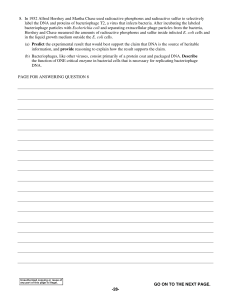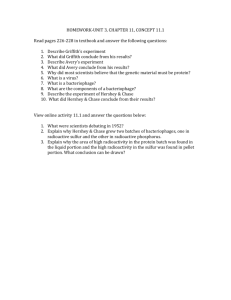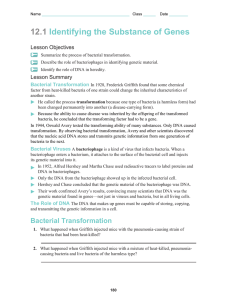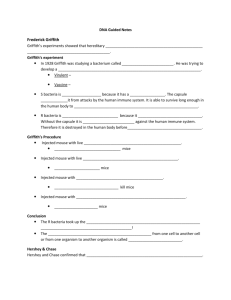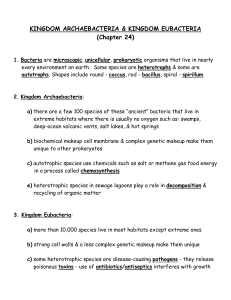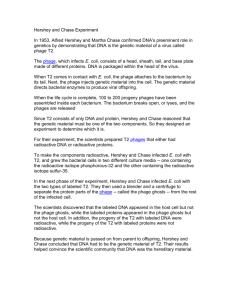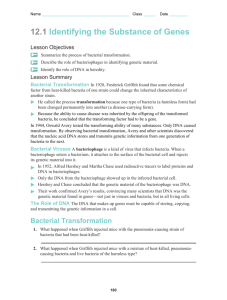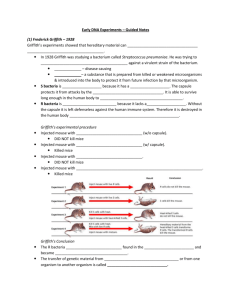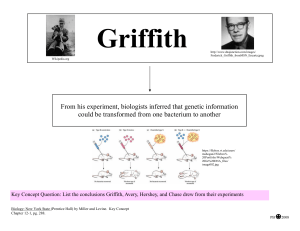Is DNA Genetic Material? Hershey and Chase Experiment
advertisement
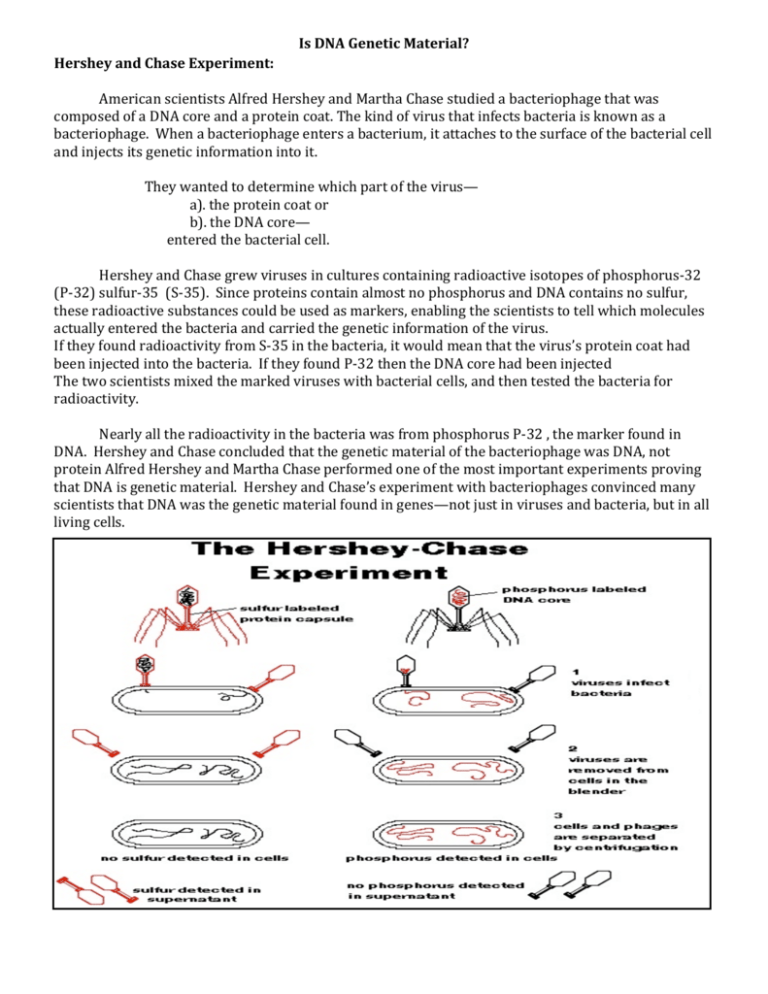
Is DNA Genetic Material? Hershey and Chase Experiment: American scientists Alfred Hershey and Martha Chase studied a bacteriophage that was composed of a DNA core and a protein coat. The kind of virus that infects bacteria is known as a bacteriophage. When a bacteriophage enters a bacterium, it attaches to the surface of the bacterial cell and injects its genetic information into it. They wanted to determine which part of the virus— a). the protein coat or b). the DNA core— entered the bacterial cell. Hershey and Chase grew viruses in cultures containing radioactive isotopes of phosphorus-­‐32 (P-­‐32) sulfur-­‐35 (S-­‐35). Since proteins contain almost no phosphorus and DNA contains no sulfur, these radioactive substances could be used as markers, enabling the scientists to tell which molecules actually entered the bacteria and carried the genetic information of the virus. If they found radioactivity from S-­‐35 in the bacteria, it would mean that the virus’s protein coat had been injected into the bacteria. If they found P-­‐32 then the DNA core had been injected The two scientists mixed the marked viruses with bacterial cells, and then tested the bacteria for radioactivity. Nearly all the radioactivity in the bacteria was from phosphorus P-­‐32 , the marker found in DNA. Hershey and Chase concluded that the genetic material of the bacteriophage was DNA, not protein Alfred Hershey and Martha Chase performed one of the most important experiments proving that DNA is genetic material. Hershey and Chase’s experiment with bacteriophages convinced many scientists that DNA was the genetic material found in genes—not just in viruses and bacteria, but in all living cells.
